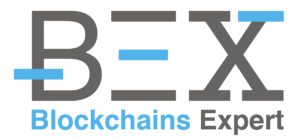OVERVIEW
Creation Date: 2017
Website: https://iota.org/
Protocol: TANGLE
Cryptocurrency: IOTA
Total number of tokens: https://coinmarketcap.com/currencies/iota/
Where to buy IOTA: Bitfinex, Binance.

PITCH:
10 new connected objects appear daily, in our homes (smart thermostats, smart lights, smart locks), in our cars, our cities…in fact, anywhere we are. And this is only the beginning. Gartner, the famous research company in computer technology, considers that the number of these objects could reach $13.5 billion by 2020. However, this movement, also called the Internet of Things, raises important questions starting from security ones.
As evidenced during an attack conducted in the United States and France in October 2016 against the access provider Dyn, it is possible to take control over every kind of connected objects such as webcams, routers and even Baby phone in order to conduct DDOS attacks. Securing the networks and the communications of these objects is now a priority.
IOTA has been created in this context and with the ambition to meet the expectations of an Internet of Things industry in full expansion. IOTA proposes a structure for networks that could support billions of members/objects. Actually, the more members, the more secure the network is. With IOTA, all these nodes could communicate and transact (through microtransactions) with each other in a secure manner.
INNOVATION:
IOTA lies on Tangle an important innovation since the creation of blockchain.
Tangle is a new type of network based on a DAG (directed acyclic graph), which brings together many of the attributes of the blockchain technology but without a blockchain. It is still a decentralized database, updated by its members through a consensus system based on the proof of work.
For more information on the functioning of the proof of work, you can refer to our article « A simple explanation of the proof of work ».
Yet, there are many differences between Tangle and a system based on a blockchain.
– There is no blockchain…: transactions are no longer stored in blocks but in the network itself, in the DAG. So without blocks, no need for minors anymore and then no fees are charged on transactions. For instance, the fees charged by minors to users the bitcoin blockchain currently runs around $2 for each transaction added to the blockchain but can reach peaks of up to 8.5 dollars.

– …So there are no assigned minors…: there are no assigned minors because each member of the Network participates in the mining of the transactions. To be able to issue a transaction each member must first validate two already existing transactions. Therefore at the time of submission of this transaction, a member will be allocated two other new transactions, selected randomly by an algorithm. It will check the validity of each of these transactions and use the same mechanism as the one used by bitcoin minors, i.e the proof of work. Obviously, the level of difficulty is much lower than the one practiced on the bitcoin network so that even the objects connected with limited capacity will be able to participate in the mining process.
For more information on the functioning of Tangle, you can read our article on the « Internet of Things: blockchain, Lightning Network, and Tangle ».
– …Which is essential to scale the network of billion nodes: the fact that each member participates in the mining of the transactions, answers the scaling issue that faces most of the blockchain networks. The current problem of the bitcoin network is that the number of participants increases, but not the size of blocks to store transactions. The bitcoin protocol cannot really cope with the increase in the numbers of transactions. It is estimated that approximately 250 000 transactions are continually waiting to be added to the bitcoin blockchain.

– The consensus mechanism also works offline. It is another important difference with a system based on a blockchain. Members of a network running with tangle can continue to communicate and transact with each other in closed networks without being connected to the rest of the network or to the internet. They then update when they return online. This option is essential for applications of the Internet of Things.
It is important to bear in mind that IOTA is still in beta, which means that the final version of the project is not yet in circulation. To our knowledge, IOTA is not used in a concrete project at the present time.
If you enjoy reading this article, please « Like » or « Share » it!!





Great info. Lucky me I found your website
by accident (stumbleupon). I’ve book marked it for later!